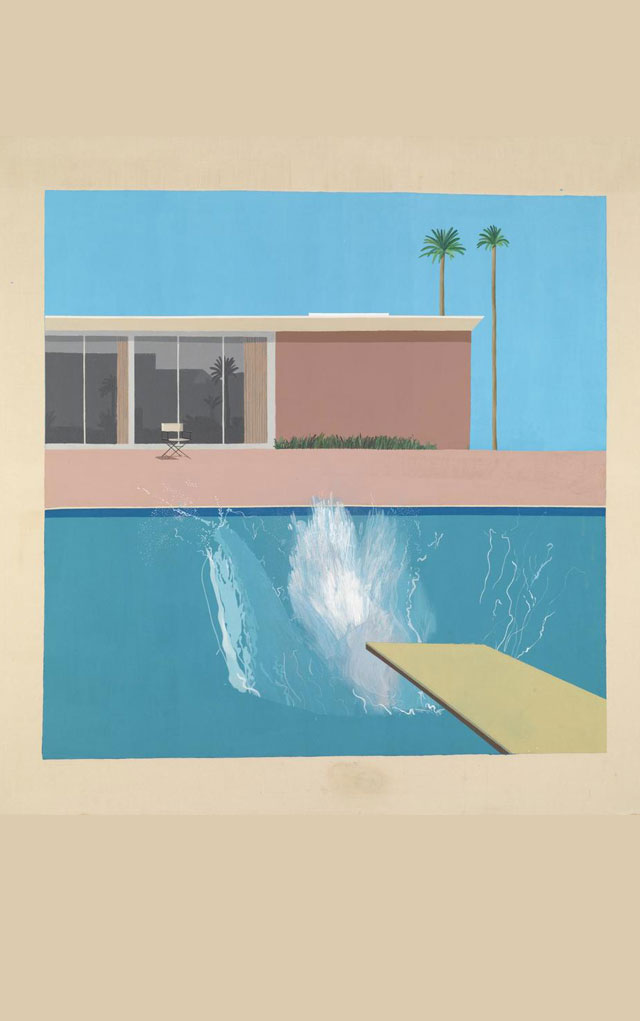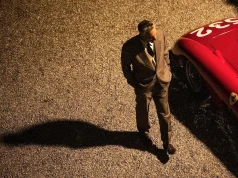
I’m interested in ways of looking, and trying to think of it in simple ways,” David Hockney says. “Everybody does look, it’s a question of how hard they’re willing to look.”
That question of perspective — and the framing devices that motivate our gaze — is the subject of Hockney’s life and work as well as the new documentary about the artist. Directed by Randall Wright, Hockney is not an objective look at the artist’s career, but a personal diary unfolding within the camera frame — a frame Hockney, the artist, is constantly expanding.
In one of his many on camera interviews, Hockney says he was a child of the radio and cinema, or “the pictures” as they called them. His family did not bring a television into their Yorkshire home until he was 18, making the cinema his main source for imagery throughout his formative years. Hockney chose to sit in the front row, so close to the screen that the frame was outside of his periphery.

As the artist recounts in the documentary, cinema provided a new world to him. But it was the act of sitting front and center that also developed his approach to painting and photography. Now 78, Hockney has completely eschewed the idea of the vanishing point — the source of visual attraction in most paintings — claiming that it is too limiting to the human subjects within the painting. He believes the image should explode out from the center, not zero in on it.
An impressive attitude to take, but not one commonly found. As artists — and people in general — grow older, they tend to shrink the world around them, zeroing in on a few select people and ideas that, to them, is enough. Not for Hockney. He craves more. More people, more ideas, more life, more color.
Thankfully, Hockney has the luxury of artistic profit. One of his friends points out that Hockney knows full well that the second he puts his name on a painting it sells. However, Hockney does not want to become a machine for producing items of monetary value, but of artistic merit. This has led him to keep pushing his art and to adapt modern technology, such as the iPhone and an iPad, to create particular works of art, even within their tiny frames, and for very select audiences.
Yet, the art is only one component of Hockney, which is comprised greatly of archival home videos of the artist and his friends. The cameras were always rolling as Hockney travels from England to New York to Los Angeles — the city he resides in and adores. His life, his work and his many ideas are documented and preserved for future generations needing idiosyncratic perspectives of the world around them.
Hockney is a work of artistic portraiture, one that is as refreshing and enjoyable as a spring breeze. If anything, the documentary provides a comforting thought: somewhere in Los Angeles, David Hockney is enjoying his life in a candy-colored dream house. The pool is clean, the air is clear and inside his mind, he is piecing it all together. The artist is hard at work.
On the Bill: Hockney. The Boedecker Theater, 2590 Walnut St., Boulder, 303-440-7825, thedairy.org. Through June 4.














